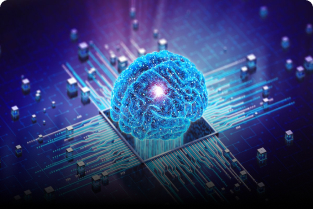The concept of artificial intelligence (AI) has evolved from being a futuristic dream to a practical reality, transforming industries and redefining how we live and work. But as AI systems grow more sophisticated, a fascinating question emerges: Could humans be an integral part of artificial intelligence itself? Let’s delve into this thought-provoking idea.
Understanding Human-in-the-Loop Systems
Human-in-the-loop (HITL) systems are a cornerstone of modern AI. These systems combine human judgment with machine efficiency to improve decision-making processes. For instance:
- Content Moderation: Platforms like Facebook and YouTube use AI to flag inappropriate content, but humans review and make the final decisions.
- Medical Diagnosis: AI systems assist doctors by analyzing medical images, while physicians validate the results and make critical decisions.
In these scenarios, humans are already an integral part of AI, ensuring systems operate ethically, accurately, and efficiently.
Brain-Computer Interfaces: A Step Closer
The emergence of brain-computer interfaces (BCIs) takes the idea of humans being part of AI to another level. Companies like Neuralink aim to create direct communication channels between the human brain and computers. This technology could enable humans to:
- Control AI systems using thoughts.
- Share data and insights directly with machines.
- Enhance cognitive abilities by integrating AI-driven insights into their thought processes.
If successful, BCIs could blur the lines between human cognition and artificial intelligence, making humans an active part of AI systems.
Augmented Intelligence: A Collaborative Approach
Another way humans could be part of AI is through augmented intelligence. Unlike traditional AI, which aims to replace human tasks, augmented intelligence enhances human capabilities. Examples include:
- Decision Support Systems: AI tools that provide insights to help humans make better decisions.
- Creative Collaboration: AI assisting artists, writers, and designers to push creative boundaries.
This symbiotic relationship ensures that humans and AI work together, leveraging each other’s strengths.
Ethical and Philosophical Implications
If humans become an integral part of AI, it raises several ethical and philosophical questions:
- Autonomy: How much control should humans retain over AI systems?
- Identity: If AI integrates with human cognition, what defines individual identity?
- Access: Will such advancements be accessible to all, or will they deepen existing inequalities?
These questions must be addressed as we explore the integration of humans into AI systems.
The Future of Human-AI Integration
While the idea of humans being part of AI might seem futuristic, the groundwork is already being laid. From HITL systems to BCIs and augmented intelligence, humans and AI are becoming increasingly intertwined. This collaboration could lead to breakthroughs in fields ranging from healthcare to education, unlocking the true potential of human creativity and machine efficiency.
As technology advances, the boundary between humans and artificial intelligence may continue to blur, opening up a new era of possibilities—and challenges. The journey to integrate humans into AI is not just about technology but about redefining what it means to be human in an increasingly intelligent world.

